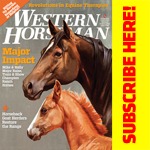Phil Stadtler might be in his mid-80s, but at 6 feet, 2 inches, he still looks like he could buck a few bales of alfalfa with little trouble. Each of his hands is as broad as an iron skillet. One eye is sky-blue, the other blind, cloudy from a long-ago ranching accident.

“Horse laid down on me,” Phil offers as a simple explanation.
Since the days of the Cowboys Turtle Association, Phil has been a mainstay in the sport of rodeo, making a name for himself as a steer wrestler and team roper. In the 1940s, he became one of the most active cattle traders in the world, brokering a quarter-million head a year out of Mexico. And, rodeo-history buffs still talk about the 1950 fistfight between Phil and Hollywood cowboy Slim Pickens.
In 2004, in recognition of Phil’s decades of involvement in rodeo and ranching, the National Cowboy and Western Heritage Museum presented him with the Chester A. Reynolds Award, which is given to living individuals “perpetuating the ideals, history and heritage of the American West.” Other recipients have included Wyoming saddlemaker Don King and natural-horsemanship pioneer Tom Dorrance.
Born in 1920, Phil has lived on the same 400-acre ranch in California’s Central Valley since 1931. He began bulldogging in the 1930s, hitting West Coast rodeos and competing in the days of long scores and 700-pound steers.
“Today’s rodeo cowboys are athletes,” he comments. “We did it just for a hobby, for fun.”
In the late 1930s, Phil began venturing into Mexico, hunting for horned cattle he could bring north to sell to stock contractors as bulldogging and roping stock. The venture began with a $280 loan from the Bank of America, and mushroomed into a multimillion-dollar concern. At the height of his cattle-trading days, Phil would fly his own plane to Mexico to buy cattle on a handshake.
“We’d write out the contract on the back of the check,” he recalls, “and that was the only contract I had for many years. I never got beat out of any money until many years later, when there got to be too many middlemen.”
In those days, Mexican cattle were often sold by age. To ensure he was getting his money’s worth on those cattle-buying trips, Phil occasionally put his bulldogging skills to work so he could take a quick look at the teeth on a few head.
“I’d bet with the sellers – a dollar or two – then bulldog a few and ‘tooth’ ’em,” Phil says. “The seller would lose a couple of times, give up and go ahead and sell. If they disagreed about the age on any others, we’d bulldog ’em.”
Phil rodeoed until the 1970s, and continued to compete as a team roper past the turn of the 21st century.
At the 1993 California State Team Roping Championships, Phil, then 72, passed out, coming off the back end of his horse, and was taken to the hospital. By the day’s end, he was back in the arena, horseback and roping again, having simply told the doctor, “I gotta go rope.”
Phil doesn’t recall the doctor’s diagnosis, but does remember winning some go-round money the next day.
Following leg surgery in recent years, Phil gave up roping. He still keeps horses on his place, and does some horse-trading via satellite and video auctions.
Of course, no chronicle of Phil’s life and career would be complete without telling the tale of the infamous fight between him and Slim Pickens.
It was November 1950, at the Cow Palace in San Francisco. Phil had sold Slim a miniature bull for his rodeo act. As the story goes, the little animal died, and there was some dispute over whether a final payment was due. The two came to blows in an old-fashioned showdown in the arena. (See a photo of the fight at www.nationalcowboymuseum.org/research/r_rhso_imag_9.html, the National Cowboy and Western Heritage Museum’s site for the Rodeo Historical Society Oral History Project.)
“It was a one-punch fight,” Phil claims. “I knocked him cuckoo.”
Despite the lifespan of the story, the dispute between the two men passed and, later in life, they were good friends.
These days, the Stadtler stockmen’s traditions live on through Phil’s sons and grandsons. His son Danny trades cattle out of Arizona; grandson Charlie is a champion roper; and grandson Russell Dilday is a talented cutting-horse trainer.



